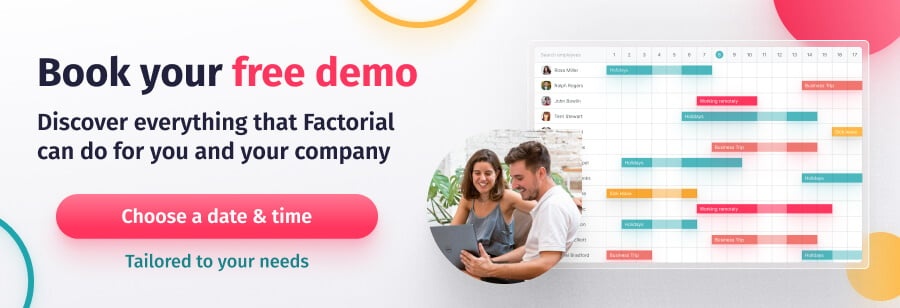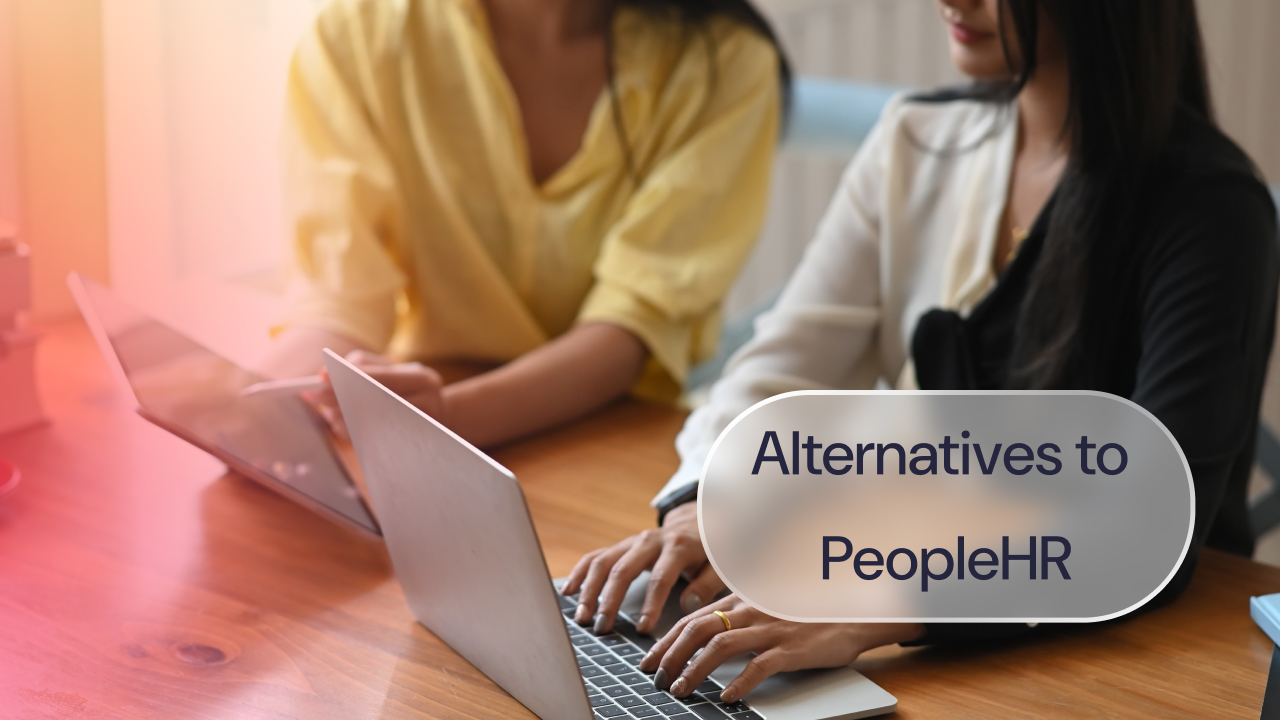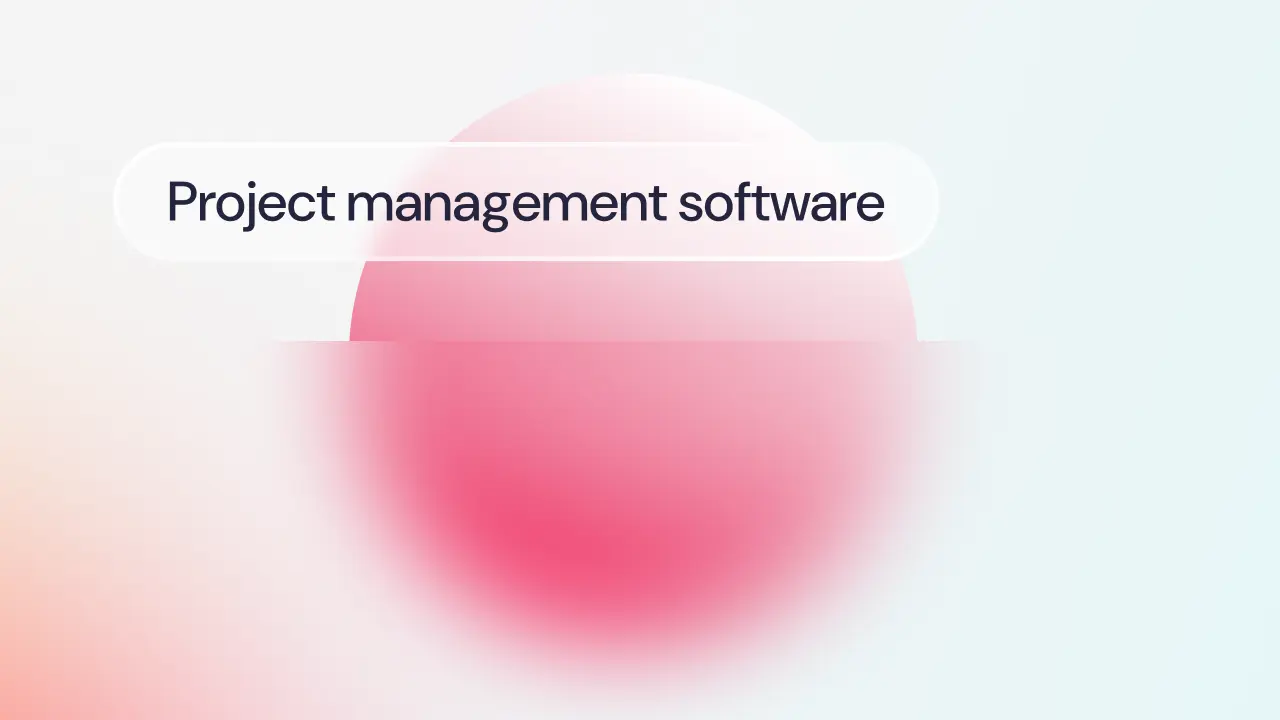All organisations with a team of people, regardless of their size, need a fit-for-purpose HRIS as a way to store and manage their people data. As your organisation changes or grows, you may realise the HRIS you once used doesn’t meet your needs anymore.
However, making the move between two pieces of HR software can come with challenges. According to McKinsey, approximately 70% of change management programmes fail to achieve their goals, largely because of employee resistance.
So, how do you move from one system to another and do it well?
Whether you are upgrading to a more advanced solution, switching to a different provider, or consolidating multiple systems into one, a well-planned and executed transition is essential to ensure a smooth and successful migration.
From evaluating your needs and data migration to training employees and ongoing support, we will provide you with valuable insights and practical tips to navigate this transition with confidence and achieve optimal results.
What is HRMS Software?
HR software, or HRMS software, is a centralised tool streamlining HR management processes. It stores employee data, automates tasks, and improves efficiency.
HR software encompasses a range of functionalities and modules that cater to different aspects of HR management. These modules typically include employee information management, payroll and benefits administration, recruitment and applicant tracking, performance management, training and development, time and attendance tracking, and compliance management.
One of the primary functions of HR software is to centralise employee data in a secure and easily accessible manner. It allows HR professionals and managers to store and retrieve essential employee information such as personal details, employment history, job titles, compensation data, and performance evaluations. This way of centralising data eliminates the need for paper-based records.
By automating routine administrative tasks, HR software saves significant time and effort for HR professionals. Tasks such as employee onboarding, leave management, and generating HR reports can be automated, reducing manual errors and increasing operational efficiency. On top of that, HR software often includes self-service portals for employees, enabling them to access and update their own information, request time off, and view company policies and announcements.
The Difference Between HRMS, HCM, and HRIS
You may have come across other acronyms for human resources technology, such as HRIS or HCM. What’s the difference? These days, it’s pretty subtle. Let’s dig deeper to address what these acronyms stand for and what different systems can do.
-
HRIS: Human Resource Information System
HRIS software is often considered the most “basic.” It tracks numerical data and employee information and offers analytics to identify workplace needs.
This refers to the overall approach that a company takes to managing its most important asset: its people. HCM uses human resource data to make better strategic organisational decisions. HCM software may include recruiting, compensation and benefits, talent management, and attendance tracking.
-
HRMS: Human Resource Management System
This software is considered to be the most robust. It deals with the same information as HCM or HRIS software, with the addition of non-quantitative information surrounding employees and applicants. HRMS software may include features such as onboarding, employee satisfaction, and more.
4 Clues That You Are Ready for an HRMS Software Download
Now that you’ve got the lingo down, we can address the four big clues that you and your business are ready for an HRMS revolution.
1. You’re bogged down with administrative tasks.
There’s a big difference between being productive and being busy. If your HR team is stuck inputting data into spreadsheets, chasing down employees for a signature, or fielding every single vacation request, it’s time for a change. Automating admin will free up the HR staff to optimise productivity and employee satisfaction.
2. You have to fight multiple systems or sift through files to find important information. If your HR department is stuck in the past using pen and paper or using a unique system for each administrative function, it’s time to give HRMS a try. Get everything in one place in order to save valuable time. This will also ensure important documents don’t get lost in the fray.
*Pro-tip: When you do invest in HR software, don’t forget to throw out those filing cabinets! Paper filing isn’t just inefficient; it’s a fire hazard.
2. Your staff are all over the place – literally.
These days, more people are teleworking than ever. Whether you have employees who occasionally work from home or employees who live on the other side of the world, HRSM can keep you centered. With simple documents management and employee files in one central location, everyone will be able to find the information they need when they need it.
3. You’re not making the most out of data.
We live in a data-driven world. There is data to be found in all kinds of HR processes and if you are not taking advantage of it, you are missing out on a vital resource. HRMS software companies like Factorial will give you a glimpse into the inner functions of your workforce. This will help you address issues in the present and plan for the future.
4. You don’t have enough time to focus on strategic thinking.
Correctly utilised HR can be the powerhouse of a company. If your HR team is too busy with spreadsheets to do the heavy-lifting they are capable of, it is time to give them a little help. Let the software do the boring stuff. Meanwhile, let HR drive change, increase efficiency, and improve employee satisfaction.
Benefits of Using an HRMS
What exactly can HR software do for you?
-
Reduce costs and administrative burdens
While HR software might mean a new monthly fee, it will probably pay for itself in time saved and liability avoided. HR teams need to carry out various daily, weekly, and monthly functions in addition to onboarding employees and managing performance appraisals. By automating these workflows, software will ensure nothing slips between the cracks.
-
Simplify and streamline information storage
An HRMS will keep all of your employee data and important documents in one place. This means you can reach whatever information you need whenever you need it.
-
Better communication across the organisation
Employees can use their interface to check the time off manager for their paid time off accrual, holiday requests, and salary. They won’t have to come to HR for every little question. This will surely save time –and frustration– on both sides.
-
Provide timely data analysis
People data is a goldmine of information that can offer insights into staff engagement, performance, turnover, costs, absenteeism trends, and more. Use your data to provide HRMS software training in areas where you hope to see improvement. Above all, make data-driven decisions that will benefit your workforce.
Transitioning Between HRMS Software
What to Consider Before the Transition
It’s important to approach the transfer between two pieces of HR software methodically. There are several important factors to consider to ensure a smooth and successful implementation. Here are some of the main areas to focus on prior to the transfer:
-
Evaluate Options
Consider factors such as features, scalability, provider reputation, user reviews, and pricing models. Choose the HR software that aligns with your organisation’s specific HR needs and long-term goals.
As part of the evaluation process, it’s important to gain a deep understanding of your organisation’s current HR processes and workflows. Identify the strengths, weaknesses, and pain points in the existing system. This analysis will help determine how the new software can improve efficiency, address gaps, and align with existing workflows.
-
Involve the Organisation in Decision Making
Involve key stakeholders, such as HR professionals, managers, and IT, in the decision-making process. Research shows that 42% of mid-level managers are most resistant to change, so it’s essential that these individuals are consulted.
Gather their input, requirements, and feedback to ensure the software meets their needs and expectations.
-
Integration With In-House Systems
Assess whether the new HR software can integrate seamlessly with your existing in-house systems, such as payroll, recruitment, and other HR tools. Integration ensures data consistency, eliminates duplicate data entry, and enables a more cohesive HR ecosystem.

Steps to Follow When Transitioning
As well as needing a considered approach when deciding on the right HR system, the transition process also requires careful planning and execution to ensure a successful migration.
Here are the key steps to follow during the transition process:
1. Back-Up Data
Before initiating the transition, it is crucial to back up all existing HR data. This ensures that no critical information is lost during the migration process and provides a safety net for unforeseen issues.
2. Review Your Data Retention Policy
Take the opportunity to review your organisation’s data retention policy. Identify which data should be migrated to the new system and which data can be archived or discarded in line with GDPR legislation and business needs.
3. Identify What Data to Migrate
Determine the specific data elements that must be migrated to the new HR software. This includes employee information, performance data, training records, payroll details, and other relevant data. Ensure that the selected data is accurate, up-to-date, and relevant for the new system.
4. Cleanse the Data
Before transferring the data, cleanse it to ensure its accuracy and quality. Remove any duplicate, incomplete, or outdated records. This step improves data integrity and prevents issues caused by migrating flawed data into the new system. You will likely need employee involvement during this stage.
5. Plan the Transfer
Develop a detailed plan for transferring the data from the old system to the new HR software. Consider factors such as data volume, migration timeline, and potential downtime. Define roles and responsibilities for each transfer process step to ensure a smooth and organised transition.
6. Customise Software Settings
Customise the back end of the HR software to align with your organisation’s specific needs. Set up software configurations, permissions, and user roles according to your organisation’s structure and security requirements.
7. Test Functionality Before Going Live
Before fully implementing the new HR software, thoroughly test its functionality. Test various features, workflows, and user scenarios to identify and resolve any potential issues or glitches.
8. Communicate the Transfer
Inform employees and stakeholders about the upcoming system change, its benefits, and any changes in HR processes or access to information. Provide clear instructions and support channels for addressing questions or concerns.
9. System Specialist For Migration
Having a system specialist in-house or readily available during the migration process is beneficial. This specialist can provide expertise and guidance during the transition, ensuring a smooth data migration, system configuration, and user training. Their presence helps mitigate any potential challenges and ensures a successful implementation.
10. Train Employees And Managers
Create a comprehensive training plan to familiarise employees with the new HR software. Offer hands-on training to allow employees to ask queries during the training.
Organisations should also provide specialised training for managers who will be using the HR software for tasks such as performance management, recruitment, and reporting. Equip them with the necessary knowledge and skills to utilise the new system effectively.
11. Monitor and Fix Glitches
After the system goes live, closely monitor its performance and functionality. Be proactive in identifying and addressing any glitches or issues that arise. Provide ongoing support and ensure that the system specialist continues to be available to handle technical concerns and provide timely resolutions.
How to Convince Stakeholders to Invest in HRMS Software
HR management solutions are revolutionising your HR department’s functions, so let’s get your boss in the loop. Here’s how to talk the talk:
Be specific with HR solutions
While discussing the benefits of working with HR solutions, zero in on the best HR software for your specific needs, remember those problems we discussed earlier? Now is the time to bring up the specific functions of the software that will address them.
Are you losing out on new talent due to recruitment inefficiencies? Be sure to stress how applicant tracking will help your company meet those recruiting goals that you have been missing.
Various studies have shown that when companies clearly define and track goals using software, they enjoy 3X the return of companies that do not. Let your boss know how much they have to gain from data analytics aimed at identifying and addressing snags.
Scheduling back-and-forths are inefficient and can lead to mistakes. An HR management software will handle all those leave and time-off requests. Software like this also helps coordinate work schedules within departments to ensure adequate staff cover.
How much time is spent providing employees with the same information repeatedly? With centralised document sharing, HR can make important documents available. You can also send forms directly to employees for an immediate digital signature. Emphasise that this will minimise your company’s legal liability by preventing documents from falling through the cracks.
Use the numbers
When it comes to business-minded CEOs, let the numbers speak for themselves. Estimate how much time your team spends on tasks, then compare it against the time you’ll save with automation. You can even break this down by category to pack a bigger punch. If you spend, say, 15 hours a week organising schedules and fielding time-off requests, that’s 37% of a 40-hour workweek! If that number drops to 2 hours a week with the implementation of software for human resources, it’s now only 5% of your work-week.
Show that software will increase productivity X%. Let your CEO know the strides HR could make if this time were dedicated to recruitment or improving employee experience.
Propose a pilot
If your boss is still on the fence, it may be the perfect time to propose your team test-drive a free HR service. Some HR management systems offer free trials, providing the perfect opportunity to see how much HR outsourcing will impact the HR team and the company.
Think BIG
Let your boss in on your vision! Streamlining processes help meet your company’s administrative needs. Freeing your team from time-consuming tasks allows them to decide more conscientiously where and how to expend time and resources. How will your team use software for HR to continuously improve processes and drive better decision-making? If you think HR is ready to embrace a more central and “strategic role,” you are not the only one!
How to Transition to Factorial
You now know everything you need to know about transitioning from one HRIS to another. The next step is finding the right product for your organisation.
Factorial is an all-in-one, digital HR software that converts these never-ending, manual processes into integrated, effective ones. Our easy-to-use platform automates administrative tasks and digitises documentation, enabling companies to transition to paperless and empowering HR professionals to make better business decisions.
Factorial allows organisations to easily:
- Centralise and digitise documents and workflows.
- Manage time, including time tracking, absence management and shift management.
- Manage talent, including performance reviews and recruitment.
…and so much more.


